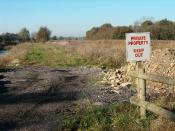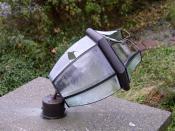American Heritage Dictionary defines "vandalism" as the "willful or malicious destruction or defacement of public or private property." Here we note that there are two major acts which characterize vandalism: destruction or the destroying of public or public properties, and defacement or the spoiling of the appearance of any surface area.
The destruction of private property as a negative deviance may have already been treated as such as early as the birth of the science of economics, of purchase and sale of property. Through economics, we were given the sense of ownership over materials we financially acquire, and at the same time given us the sense of power over these materials. Because we financially acquire this power of ownership, we do not want to lose this feeling of power. However, this is exactly what vandalism goes against; it goes against ownership. The act of others destroying our property makes us lose this power over the material, which becomes inexistent once they destroy our own property.
The destruction of public property, on the other hand, goes under the similar argument as the one above. Instead of properties owned by an individual, these properties are owned by the public, and each one of us do not want to lose this sense of authority over the objects we all share in this society.
The defacement of property whether it is a positive or a negative deviance, however, is quite arguable. Is there a difference between colorful paintings sprayed on the wall, and a nonsensical message written on a fence? Is graffiti an art or an act of vandalism? Is it vandalism when it is placed on the side of a building, and art when it is on a canvas on someone's wall? These are some of the relevant questions we must consider...


